ASK MY PHARMACIST | GOT QUESTIONS? Your pharmacist has answers. Click Here
Lab Technician or Pharmacist in Australia, USA, Canada (2025): A Complete Guide for Students
Compare Lab Technician and Pharmacist careers abroad in 2025 — explore salary, exam, visa, and study requirements for Australia, USA, and Canada. Learn about OPRA, PEBC, AIMS, ASCP & CSMLS exams, costs, and ROI to choose your ideal healthcare career path.
Aditi
10/9/20255 min read


Key Points to Remember
Lab Technician: Cheaper, faster way, secure jobs.
Pharmacist: High investment, high salaries, good career options.
Australia: OPRA (Pharmacist), AIMS (Lab Tech).
USA: FPGEE + NAPLEX (Pharmacist), ASCP (Lab Tech).
Canada: PEBC (Pharmacist), CSMLS (Lab Tech).
ROI: Lab Tech in 2-3 years, Pharmacist in 1-2 years after licensing.
Choosing your career ends up as one of the most important decisions that you will ever make, especially when you are thinking about moving abroad. People who are really enthusiastic about the healthcare sector might find that a job as a Lab Technician or a Pharmacist is the perfect solution for them. These two occupations are stable, rewarding, and will be needed everywhere in the world in the future. In fact, both professions are essential to patient care, but they differ in terms of scope—they are separated by the walls of a laboratory and the clinical/community setting. The present guide provides a comprehensive and current comparison of these two professions for students and workers planning to move abroad in 2025, with a focus on achieving this goal in Australia, the USA, and Canada.
Why These Careers Are in Demand in 2025
The healthcare sector is among the rapidly expanding areas all over the world and that trend is still going on in 2025. The demand is driven by many factors:
Aging population: The elderly demographic → higher consumption of drugs, diagnostics and lab tests.
Chronic diseases: Diabetes, cancer and cardiovascular diseases are the sources of patients who require continuous medication and lab monitoring.
Medical innovation: Tailored medication and improved diagnostic tests are becoming standard.
Immigration Policies: Due to skill shortage, countries like Australia and Canada actively invite healthcare workers.
This is making them attractive for students who are aiming for PR (Permanent Residency) later and both careers are included in high-demand occupation skills.
Understanding the Roles
What a Lab Technician Does
Diagnostic tests on blood, tissue samples and urine.
You have to be equipped with advanced equipment such as analysers, microscopes and molecular testing tools.
Provides the necessary information that doctors require for diagnosis and treatment.
Common Job Titles: Clinical Laboratory Scientist, Pathology Technician, Medical Laboratory Technologist.
Work settings: hospitals, laboratories, research institutes and pharmaceutical companies.
This role fits you all in detail oriented analytical and prefers working with technology instead of patients.
What a Pharmacist Does
Have to dispense prescription medicines accurately and safely.
Advises patients on drug interactions, medication use and side effects.
Provide health checks in many countries and vaccination services.
Common job roles: Hospital pharmacist, clinical pharmacist, community pharmacist and pharmaceutical researcher.
Work settings: Hospitals, Pharmacies, universities, and pharmaceutical companies.
Pharmacists are a better choice if you are enjoying patient interaction, responsibility and direct healthcare roles.
Eligibility & Academic Pathways
Lab Technician Requirements
Minimum Education: High school with excellent grades in Biology, Chemistry, and Physics.
Diploma/Bachelor's Degree:
Australia: Diploma or Bachelor of Medical Laboratory Science.
USA: Associate’s or Bachelor’s in Medical Laboratory Science.
Canada: 2–3 year Diploma or BSc Medical Laboratory Technology.
Licensing/Certification: Necessary both in the USA and Canada. For example:
ASCP Certification (USA) – the main standard for medical laboratory scientists.
CSMLS Certification (Canada) – compulsory for employment.
Duration: It mostly takes 2 to 4 years depending on the course.
Pharmacist Requirements
Pre-Pharmacy Coursework: 2 years of undergraduate science courses in Biology, Chemistry and Mathematics.
Professional Degree:
USA: Doctor of Pharmacy (PharmD) – 4 years.
Canada: PharmD – 4 years.
Australia: Bachelor of Pharmacy (BPharm, 4 years) or Master of Pharmacy (2 years after the Bachelor course).
Internship/Training: Clinical training done on a compulsory basis (6-12 months).
Licensing Exams: Specific to each country (further explained).
Duration: 5–7 years with pre-requisites and licensing included.
Country-Specific Pathways
Australia
Lab Technician:
Start by applying for a Diploma or Bachelor's program.
Get your skills assessed by AIMS (Australian Institute of Medical Scientists) after your studies.
After gaining work experience you are eligible for skilled migration.
Pharmacist:
It's compulsory to pass the OPRA Exam (Overseas Pharmacist Readiness Assessments) from 2025.
Complete your internship under supervision.
With the Pharmacy Board of Australia apply for registration.
Visa Path:
Student Visa (Subclass 500) → Temporary Graduate Visa (Subclass 485) → Skilled Migration.
USA
Lab Technician:
Study an Associate's or a Bachelor's in Medical Lab Science.
For recognition, get the ASCP certification.
Job opportunities are available for hospitals, private labs and clinics.
Pharmacist:
Foreign graduates → FPGEC Certification (TOEFL + FPGEE exam).
You complete internship hours (1,500+).
Pass NAPLEX + state Jurisprudence Exam.
Visa Path:
Student Visa (F-1) → OPT (1 year) → H-1B or Green Card sponsorship.
Canada
Lab Technician:
Need to study for 2 to 3 years for a diploma.
To work one must pass the CSMLS Certification Exam.
Pharmacist:
International graduates → PEBC Evaluation Exam → Qualifying Exam (MCQ + OSCE).
In Canada Internship requirements must be completed.
Visa Path:
Education permit → Post-Graduation Work Permit (PGWP up to 3 years) → PR under Express Entry/Healthcare stream.
Costs & Financial Planning (2025)
If you want shorter and cheaper courses than lab technician courses are better for you. But if you wish to high salaries later then pharmacy requires a bigger investment.
Career Opportunities & Salary Prospects (2025)
Lab Technician Careers
Roles: Pathology technician, Clinical lab scientist, microbiology lab assistant.
Growth areas: Biotechnology, Genetic testing, and hospital diagnostics.
Salaries:
USA: USD $62,000/year.
Canada: ~CAD $70,000/year.
Australia: ~AUD $91,000/year.
Pharmacist Careers
Roles: Hospital Pharmacists, Community Pharmacist, clinical Consultant and pharma research.
Growth areas: Advance patient care, Tele Pharmacy, medication therapy management.
Salaries:
USA: USD $128,000/year.
Canada: CAD $91,000–$112,000/year.
Australia: AUD $78,000–$110,000/year.
With the cost of long-term studies and exams pharmacists can earn nearly double than lab technicians.
Challenges & Tips For Success
Exam Preparation: Plan at least 6-12 months of preparation for the exam PEBC, OPRA and NAPLEX because they are tough.
Cultural shift: Build networks early but adjusting to healthcare systems abroad takes time.
Licensing Delays: You may take up to 2 years of post graduation to get registration for Pharmacists.
Visa Uncertainty: To ensure the smooth transaction to get PR just stay updated on immigration Policies.
Conclusion
If you are looking for a fast, cheap and stable job in the future, a career of lab technician in Australia, the USA or Canada would be an excellent choice. You can take your studies for 2–3 years and start working right away with a certificate.
On the other hand, if you want a hospital career with high salaries, direct patient interaction and leadership positions, then the profession of a pharmacist is definitely worth the higher cost and longer study period.
Anyway, both career choices offer immigration opportunities, financial stability and career growth in 2025. The decision depends on your money, what you like, and where you want to be in your career, whether you work in labs behind the scenes or are in the frontline with patients.


About the Author
Aditi Pathak
Content Writer | Elite Expertise
Aditi Pathak is an experienced SEO content writer with over 4 years of expertise in crafting engaging, well-researched, and search engine–optimized content. Currently pursuing her Master’s in English, she brings together strong academic knowledge and creative writing skills to deliver blogs and articles that are both informative and reader-friendly. Aditi is passionate about simplifying complex topics into clear, accessible content that resonates with diverse audiences. Her focus lies in creating value-driven content strategies that enhance online visibility while keeping readers informed and engaged.
Follow On
Follow Us
+91 76750 84909
Privacy Policy | © 2025 Elite Expertise . All Rights Reserved.
ELITE EXPERTISE PTY. LTD (ABN: 15668292439) (ACN: 668292439)
Australian Statutory Education License: OPP 2025 ELITE EXPERTISE PTY. LTD
Disclaimer
Elite Expertise is an online education platform dedicated solely to providing coaching and preparation services for the OPRA, PEBC, PSI and PTE exams. We do not offer any sponsorship or migration services. All information provided on our platform is for educational purposes only and should not be interpreted as legal or immigration advice. For inquiries regarding sponsorship, visa applications, or migration services, please consult with licensed immigration professionals or relevant authorities.
Elite Expertise is a trusted and results-driven training platform specializing in preparation for international pharmacist licensing exams. Our comprehensive courses, expert instructors, and proven methodologies have helped countless pharmacy professionals achieve their goals and succeed in competitive regulatory exams. We are proud of our strong success rate and commitment to excellence.
Elite Expertise is an independent training provider. We are not affiliated with any global pharmacy regulatory authorities or official exam-conducting bodies.
Copyright © 2025 Elite Expertise. All rights reserved.
Address
Unit 1/73 Beverley St, Doncaster East VIC 3109, Australia
